If you want to get stuck into a bit of outdoor adventure, but you’re not keen on sleeping in a swag or a tent, and you really don’t like the idea of towing a camper-trailer or caravan, then maybe a camper van will work for you.
This is VW’s T6.1 California Beach camper van – it looks pretty retro cool (especially with its optional two-tone paint job), it has a fair few features as standard and may offer you a low-key gentle introduction to a van-based adventure lifestyle.
But does the Beach, based on VW’s mid-size Transporter van and a refreshed version of a classic, represent a camper which is actually more style than substance?
Read on.
Volkswagen California 2021: TDI340 California Beach
| Engine Type | Diesel Turbo 4, 2.0L |
|---|---|
| Fuel Type | Diesel |
| Fuel Efficiency | 6.6L/100km (combined) |
| Seating | 7 |
| Price From | $65,230 - $75,020 |
Does it represent good value for the price? What features does it come with?
Our test vehicle is the five-seat California Beach TDI 340, with a 2.0-litre four-cylinder turbo-diesel engine, seven-speed DSG (direct shift gearbox) and VW’s 4Motion all-wheel-drive system. It has a manufacturer's suggested retail price of $86,990 (plus on-road costs).
Our test vehicle has a few extra options over standard – including the Appearance package ($5760), Two-tone paint ($3990), electric pop-top roof ($2990), and the off-road package ($1600).
The appearance package includes art velour micro-fleece seat-covering with leather seat bolsters, seat heating for driver and front passenger seat, LED headlamps with separate LED daytime running lights and LED tail-lights, headlight range-adjustment (automatic), high-beam light assist, and the digital cockpit (more about that later).
.jpg)
The two-tone paint is described as “Candy White with Bay Leaf Green”.
The electric pop-top roof has two side windows and a panorama front opening window.
The off-road package consists of a mechanical rear differential lock and hill descent control.
.jpg)
All of those add-ons push the price as tested to $101,330 (plus on-road costs).
Available options that aren’t on our test vehicle include a Driver Assistance Package (with adaptive chassis control and parking assist, for $2290), and an Electric Door Package ($2590).
Standard features on the California Beach include (take a breath) 180° swivel seats (the driver's seat and the front passenger) with armrests and lumbar supports, the full-length rail system to rearrange or remove seats, a power latching sliding door on the left and right, power latching tailgate, Discovery Media 8.0-inch navigation system, colour touch display (with easily initiated Apple CarPlay and Android Auto), USB-C/AUX/SD input, six speakers, FM frequency, wireless app-connect, electrically folding heated exterior door mirrors, automatic headlights with rain-sensing wipers and dimmable rear view mirror, privacy glass in the passenger compartment, Climatronic air-conditioning system, fully sprung loft bed (1200mm x 2000mm) with comfortable-sprung base and mattress, bed extension for rear bench seat with comfort sleeping mattress, camping table and two folding chairs, camper control unit with touchscreen, pull-out awning with housing and rail in black or silver, programmable auxiliary air parking heater, second battery, 17-inch Aracaju wheels (with a steel spare), and trailer-wiring preparation.
.jpg)
The seats have “Quadratic” cloth upholstery in Titanium Black as standard; our test vehicle, as mentioned, had the appearance package’s art velour micro-fleece seat-covering with leather seat bolsters.
Exterior colour options include Candy White, Ascot Grey, Cherry Red, Pure Grey (all solid); and
Bay Leaf Green, Copper Bronze, Fortana Red, Indium Grey, Mojave Beige, Ravenna Blue, Reflex Silver, Starlight Blue. Pearlescent: Deep Black (all metallic:); or two-tone options such as Candy White with Copper Bronze, Candy White with Bay Leaf Green (on our test vehicle), or Candy White with Ascot Grey.
Is there anything interesting about its design?
VW’s designers have given the classic van appearance a real fresh 21st century touch-up. The California T6.1 is a retro-cool camper whose street-cred factor is also bolstered enormously by the optional two-tone paint job.
.jpg)
It certainly turned a lot of heads during the seven days I had it.
What are the key stats for the engine and transmission?
It has a 2.0-litre four-cylinder turbo-diesel engine (producing 110kW at 3250-3750rpm and 340Nm at 1500-3000rpm), a seven-speed dual-clutch auto (or DSG, direct shift gearbox) and VW’s 4Motion all-wheel-drive system.
.jpg)
How practical is the space inside?
The California’s interior is nice and comfortable – a blend of life-friendly hard plastic and soft-touch surfaces – with a solid build quality to it all, as well as superior fit and finish.
This camper seats five (two at the front, and three on the rear bench seat), can sleep up to four, and is a very functional space. All controls are easy to find and operate, and our test vehicle's appearance package option includes the 10.25-inch high-resolution colour touchscreen, so that was even better than the standard 8.0-inch screen.
.jpg)
The 180° swivel front seats are simple enough to manipulate into position, as long as you adjust the seat-backs so they don’t hit or rub against other surfaces on the way around.
The second row bench seat has child-seat anchor points, and two ISOFIX points.
That rearrangeable/removeable rear seat (which slides fore and aft on the camper’s full-length rail system) gives California users the ability to turn that pew into a bed or to position it in order to maximise the space inside for meals, entertaining etc.
.jpg)
The van has a camp table (tucked away inside the right-hand sliding door), two camp chairs (stowed away in the rear door), and a magnetic rechargeable torch.
.jpg)
The awning, stored and extended from above the sliding door on the camper’s right-hand side, is easy enough to set up and pack away – it only takes a few minutes – but even though it can be done by one person, I recommend two people do it because that makes it an easier and faster job.
.jpg)
Beyond all of those things, what is crucial to this camper van is the hub of the California’s operating system: the camper control panel, a touchscreen mounted upfront above the rear-view mirror. Using it, you can operate the pop-top roof, monitor the camper’s battery levels, and even make sure the camper van is level, so you don’t end up trying to sleep on a slight gradient.
.jpg)
The California Beach is 4904mm long with a 3000mm long wheelbase. It is 1990mm high, 1904mm wide, and has a listed kerb weight of 2457kg.
Once the electric pop-top roof is fully upright, easily done via the camper control panel, the California is an extra 1050mm taller than when that pop-top is not extended. (Note: check for any obstacles above the camper (eg, a tree branch) before you try to raise the roof.)
.jpg)
When that roof is up – and the bed base is lifted – there is a claimed 2300mm standing room inside the California, giving you a bit more flexibility in terms of moving around inside the vehicle while it is stationary, e.g. during meal preparation or while setting up the rear-seat bed etc.
The van also has block-out blinds – roller blinds on the windscreen and magnetic curtains on the side windows – to help the occupants get a good night’s sleep.
In terms of cargo space, this California has 4.3 square metres in total; and the load compartment is 2532mm long (without the rear seats); 1627mm wide (1220mm between the wheel arches); and 1320mm high. Load height at the rear is 571mm from the ground.
What's it like as a daily driver?
The California Beach is not an unsubstantial vehicle – at 4904mm long with a 3000mm long wheelbase, 1990mm high, 1904mm wide, and a 2457kg kerb weight – but if you’ve spent any time in a mid- to large SUV or wagon, or a ute then you’ll be fine. Even if you’ve only ever driven a hot hatch, it won’t take long to become accustomed to driving this camper.
Steering is natural, well weighted and precise and that means a lot for a camper van like this, because, while it's not gigantic, the California can feel a tad weighty through sharper corners. Turning circle is an estimated 11.9m.
.jpg)
The California's turbo-diesel engine and seven-speed dual-clutch auto work well together: it’s a nice, smooth pairing that gives this camper a bit of welcome pep about it and generally makes for an unfussed drive.
Bonus: there is ample visibility in the California: you have glass everywhere, and that makes for a relaxed, almost open-to-the-elements driving experience.
.jpg)
The camper’s suspension set-up – independent McPherson struts, with coil springs and gas-filled dampers (at the front), and semi-trailing independent rear axle with coli springs and anti-roll bar at the rear – helps to yield composed ride and assured handling.
Even if your blacktop route becomes a bit twisty, or even very hilly this is generally a well-behaved and smooth-driving vehicle.
What's it like for touring?
You do have the option in this of taking on tracks that are a little bit tougher than run-of-the-mill bitumen because it has VW’s 4Motion all-wheel-drive system. And, remember, the $1600 off-road package adds a mechanical rear differential lock and hill descent control to this camper van’s driver-assist tech. But none of that means you should attempt hard-core rock-crawling in your California.
With 193mm of ground clearance and approach, departure and ramp breakover angles of 21.8, 16.7 14.3 and respectively, it’s clear that this camper is not built for anything remotely resembling serious off-roading, but it is more than capable enough of tackling light-duty off-roading, i.e. well-maintained gravel or dirt roads with few, if any, corrugations, and in dry weather only. But its AWD is best suited to improving your drive experience in traction-challenged circumstances, such as a wet highway or the like, rather than making it any kind of low-speed, low-range 4WD beast.
.jpg)
Payload is listed as 623kg. Worth noting is the fact that the roof load maximum (closed) is listed as 50kg.
Worth keeping in mind is the fact that the pop-top roof has a listed maximum load of 150kg, so I reckon it’s a better space for kids, than adults. There is a safety net to ensure energetic little sleepers don’t tumble out of bed during the night. The pop-top bed has dimmable LED lighting.
The California has towing capacities of 750kg (unbraked) and 2500kg (braked). GVM (gross vehicle mass) is a claimed 3080kg.
It rides on Bridgestone Duravis R660 (215/60R17) on Aracaju wheels (with a steel spare). It has a tyre pressure monitoring system as standard.
.jpg)
If you want to kit out your California you’re well catered for because Volkswagen Genuine Accessories include everything from head-rest tablet holders, rubber floor mat sets, and slimline weather-shields, through to roof bars, bicycle tailgate carriers, and tow bar kits.
How much fuel does it consume?
Fuel consumption is a claimed 7.5L/100km on a combined cycle.
Actual fuel consumption on this test was 9.9L/100km.
It has an 80-litre fuel tank, and a 13-litre AdBlue tank.
Warranty & Safety Rating
What safety equipment is fitted? What safety rating?
The California Beach doesn't have an ANCAP safety rating because it hasn't been tested here yet, but safety features include front, side head thorax curtain airbags, autonomous emergency braking, blind spot monitoring, rear traffic alert and lane assist, crosswind assist, driver fatigue detection, and a reversing camera.
What does it cost to own? What warranty is offered?
It has a five-year/unlimited kilometre warranty.
Pricing for service intervals, every 12 months or 15,000km (whichever comes first), is yet to be confirmed but expect to pay in the vicinity of $1450 for a three-year service plan, and approximately $2300 for a five-year service plan.
Verdict
The appeal of a camper van, especially one like the California Beach, is blatantly obvious because it's functional, it's comfortable and it's nice to drive.
But, for me, a lot of other things make more sense, especially at this price point: you could buy a new 4WD wagon/SUV or ute and a camper trailer – and you’d have cash left over and your adventure capabilities would be much greater than they are in a camper van, even an AWD one, such as this.
Or you could buy a used motor home – a vehicle equipped with sleeping, cooking and bathroom/toilet facilities – and you’ll probably still have money left over from a hundred grand to spend on other gear to bolster your camping experience.
However, there’s no denying that the California Beach is more than fit for purpose, and may be an ideal introduction to the adventure lifestyle for some.
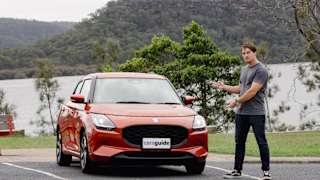
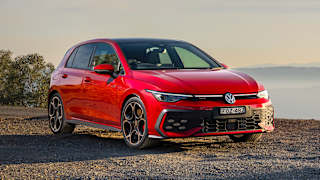
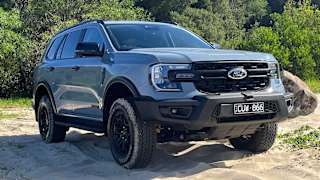
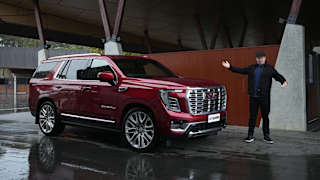
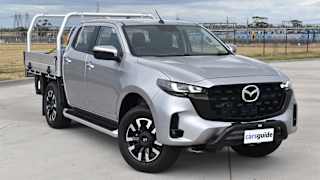
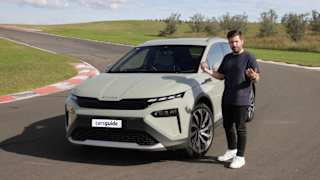
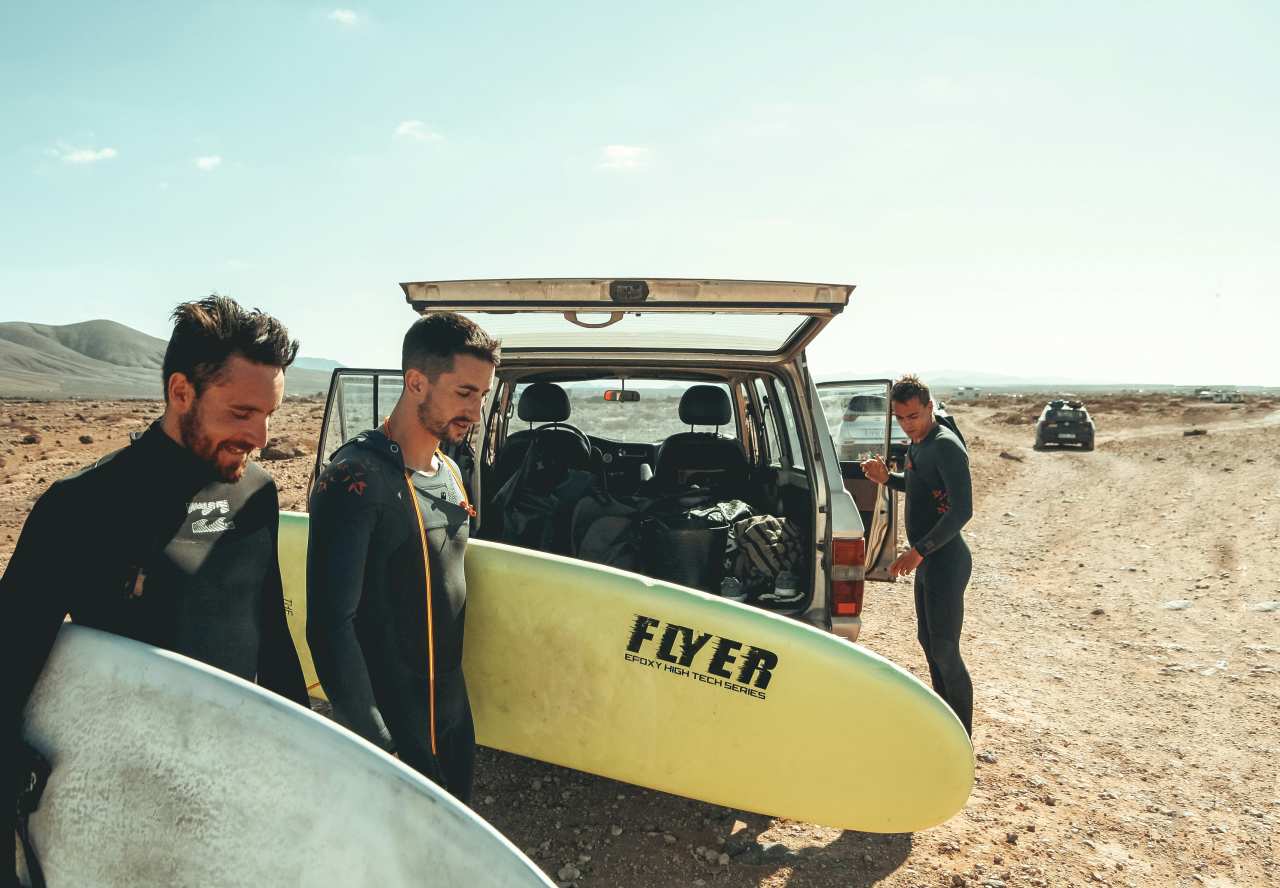

.jpg)
.jpg)




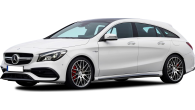
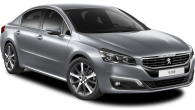
.jpg)
.jpg)
.jpg)
.jpg)

.jpg)
.jpg)